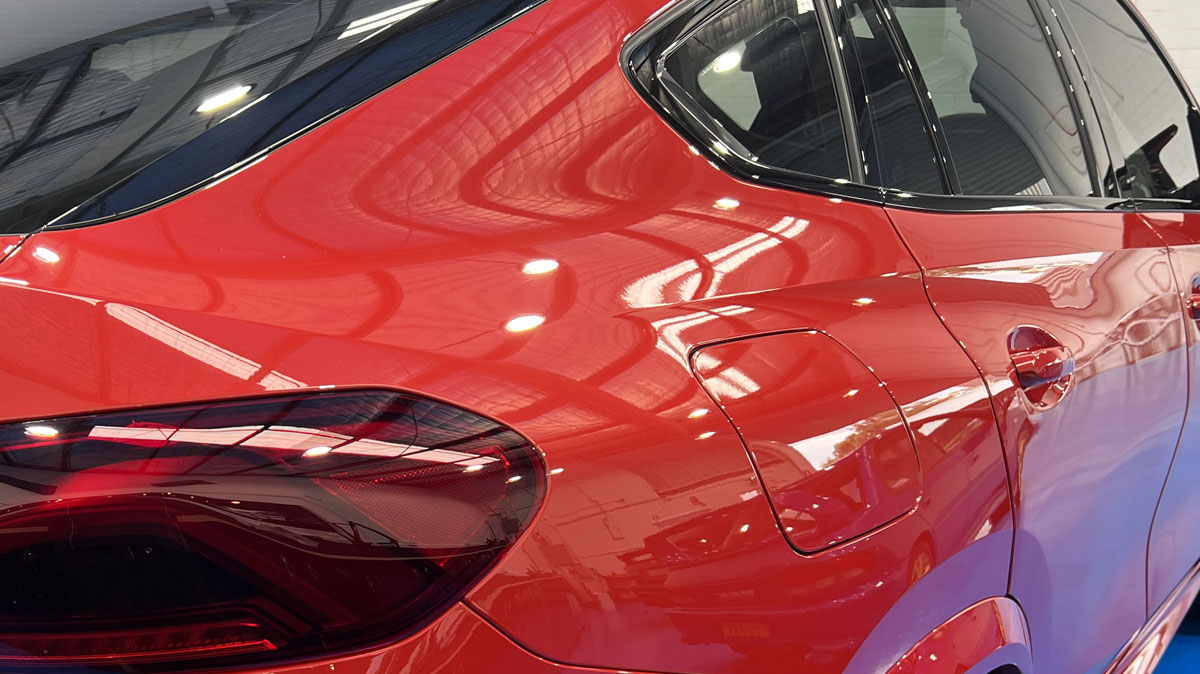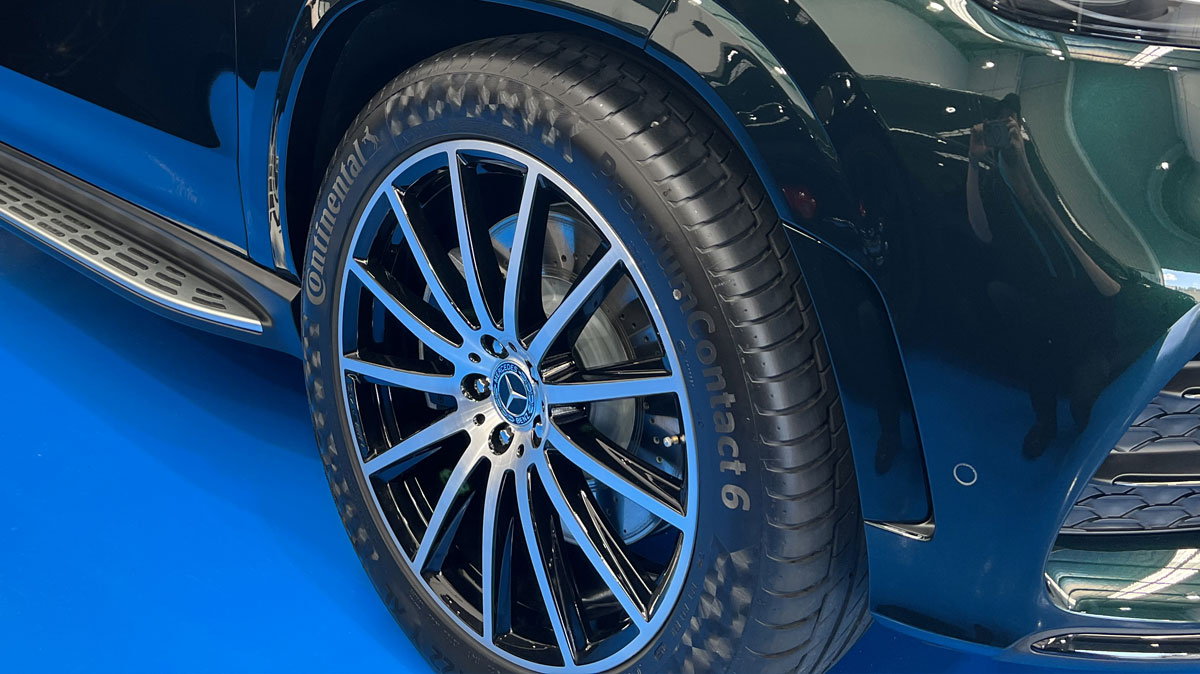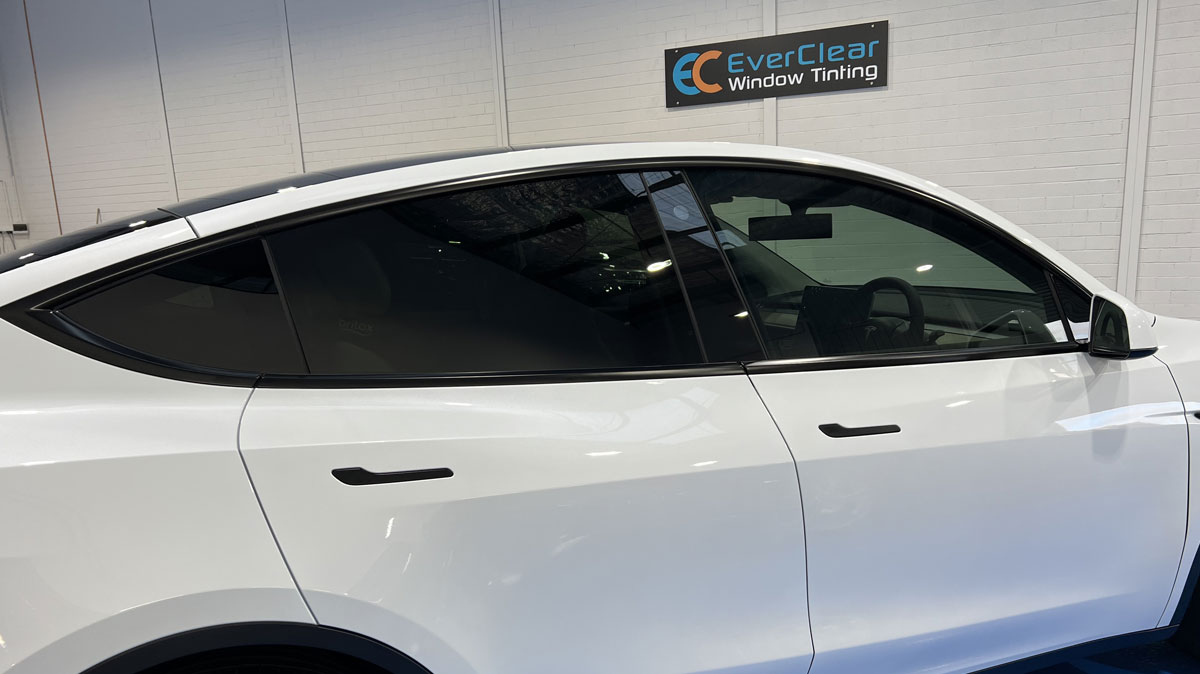
When it comes to safeguarding your vehicle’s appearance, a question often emerges: Is ceramic coating worth it? As an educational insight into the world of car care, let’s dive deeper into what this modern marvel offers.
Ceramic coating is not just about the aesthetics; it provides enhanced paint protection against the harshness of UV rays and the onslaught of chemical stains that can dull your car’s shine over time. Furthermore, the ceramic layer pledges exceptional water-repellency, enabling water to bead up and roll off the surface, significantly reducing dirt accumulation and making cleaning almost effortless.
But that’s not all—this invisible armament aids in the preservation of paint gloss and colour depth, ensuring that your car turns heads with its pristine and lustrous finish long after application. Together, let’s evaluate if ceramic coating lives up to its promise, turning your investment into a long-term victory for your vehicle’s enduring beauty.
Durability and Longevity: Is Ceramic Coating the Investment Worth Making?
When contemplating whether a ceramic coating is worth the investment, understanding its durability and longevity is essential. Compared to traditional waxing methods, ceramic coatings stand out for their remarkable resilience and lifespan. But what factors come into play affecting the longevity of your ceramic coated vehicle?
Typical Lifespan vs. Traditional Wax
Ceramic coatings outshine traditional wax in terms of the protection they offer over time. Where wax might offer a few months of shine and a thin layer of protection, ceramic coatings promise years of superior performance. An adeptly applied ceramic coating can last anywhere from 2 to 10 years, dwarfing the span of wax that requires reapplication every 3 to 4 months.
The endurance of a ceramic coating is subject to several factors:
- Quality of the product: Higher-grade coatings tend to offer longer protection.
- Professional application: Proper application by experts can maximize the lifespan of the coating.
- Maintenance routine: Regular washing and care can preserve the coating’s integrity.
- Environmental conditions: Exposure to harsh weather or chemicals can affect duration.
Protection Against Environmental Damage
One of the most compelling reasons to consider ceramic coating is its exceptional ability to protect your vehicle against a host of environmental aggressors. Daily, our cars are subjected to numerous substances that can damage paint and diminish value. Ceramic coating serves as an invisible shield, safeguarding the car’s exterior with a durable layer of protection.
The science behind Ceramic coatings allows them to provide a resilient barrier between your car’s paint and the damaging effects of:
- Acid Rain: The hydrophobic properties of ceramic coatings repel water, causing acid rain to bead and roll off, minimizing the contact time and potential damage from acidic compounds.
- Bird Droppings: The slick surface created by ceramic coatings ensures that bird droppings can be easily cleaned off without etching the paint, preserving your vehicle’s gleaming appearance.
- Tree Sap: A common irritant, tree sap, can be challenging to remove and might cause staining. Ceramic coatings make it harder for sap to adhere to the surface and easier to remove without causing damage.

Preventing Oxidation and Rust
Over time, exposure to oxygen and moisture can lead to oxidation and rust, which not only deteriorate your car’s aesthetic but can also compromise its structural integrity. Ceramic coatings offer a substantial defence by creating a seal that minimises exposure to these elements, thus preventing the chemical reactions that cause rust and corrosion.
Investing in ceramic coating translates to less maintenance and repair costs associated with environmental damage, keeping your vehicle in pristine condition for years to come. When assessing “is ceramic coating worth it,” the protective benefits it offers against environmental factors are a significant consideration for any vehicle owner.
Pros and Cons of Ceramic Coating vs. Other Protective Measures
Ceramic coatings provide a hard, protective layer on your vehicle’s exterior, offering superior resistance to scratches and chemical contaminants. The hydrophobic properties also make cleaning easier and prevent water spots. However, ceramic coatings can be more expensive upfront and require professional application for the best results.
On the other hand, waxes and sealants are less costly and can be applied by the car owner. They provide a decent level of shine and protection but tend to break down faster under environmental stresses, leading to more frequent reapplications.
Long-term Effectiveness and Reapplication Frequency
One of the most notable differences is in the longevity of the protective layer. Ceramic coatings can last several years with proper maintenance, whereas waxes and sealants may require reapplication every few months:
- Ceramic Coatings: May last 2 – 10 years, sometimes longer, depending on the product and maintenance.
- Wax: Typically lasts 3 – 4 months, depending on environmental conditions and usage.
- Sealants: Generally offer better durability than waxes, protecting for about 6 months.
Ceramic coatings stand out in their ability to withstand the test of time, reducing the frequency and costs associated with regular reapplications that are part and parcel of using waxes and sealants.
Cost vs. Value Analysis: Is Ceramic Coating a Smart Investment?
When considering ceramic coating for your vehicle, it’s essential to analyze both the upfront costs and the long-term savings. Initially, ceramic coating may seem like a significant investment compared to traditional waxing or sealing. However, the value proposition becomes clear when weighing the benefits of maintenance, appearance, and durability.
The initial cost of a professional ceramic coating service can be substantial. Factors that affect the price include the size of your vehicle, the condition of your car’s paint, and the quality of the coating product. While do-it-yourself kits might be a less expensive alternative, they generally do not offer the same level of protection or longevity as a professional application.
Considering the durability of ceramic coatings, which can last several years, owners may enjoy significant cost savings over time. A vehicle with ceramic coating typically requires less frequent washing and seldom needs waxing or resealing. This resilience translates into savings on maintenance and detailing services.
The Value of Maintenance, Appearance, and Durability
- Maintenance: A ceramic-coated car makes cleaning easier, as it repels water and dirt. This means less time and money spent on upkeep.
- Appearance: Ceramic coatings are renowned for providing a deep, lustrous shine that lasts. Your car will not only look newer for longer, but you’ll also avoid the costs associated with paint fading and minor scratches.
- Durability: The protective properties of ceramic coatings shield your car’s paint from UV rays, chemical stains, and etching. This durability safeguards your vehicle’s aesthetic and structural integrity, potentially reducing the need for expensive repairs caused by environmental damage.
Ultimately, when evaluating, “Is ceramic coating worth it?” consider the long-term perspective. A higher initial investment in ceramic coating can mean enhanced vehicle preservation, decreasing the need for frequent care and retaining your vehicle’s value over its lifespan. Factoring in these benefits, many vehicle owners find the investment in ceramic coating not only worthwhile but also economical in the long-run.
Impact on Vehicle Resale Value
Considering the future value of your vehicle is crucial when weighing automotive care options. Is ceramic coating worth it in terms of resale value?
Applying a ceramic coating to your vehicle can lead to an increase in its resale value. This protective layer not only preserves the paint’s aesthetic but also defends against environmental wear and tear, which is a significant concern for potential buyers. A car with a well-maintained exterior often suggests a well-cared-for vehicle overall, which can command a higher price when it’s time to sell.
How Protection History Influences Buyer Perception
The documented history of a vehicle’s protection can drastically influence a buyer’s perception. A car that has had a ceramic coating applied and maintained communicates to potential buyers that the owner has invested in preserving the vehicle’s condition. This not only establishes trust in the quality of the car but also signals that it may require less cosmetic maintenance in the future, further justifying a higher resale value.
- Documented ceramic coating applications add value in the eyes of buyers.
- Protection history can reduce buyer’s long-term maintenance concerns.
- A well-maintained exterior is a strong selling point.
Maintenance Requirements for Ceramic Coated Vehicles
Regular Washing: Keep your ceramic coated vehicle clean by washing it every two weeks or when it’s noticeably dirty. Use a pH-neutral car shampoo and avoid harsh chemicals.
Immediate Stain Removal: If any contaminants like bird droppings, tree sap, or tar get onto the paint, it’s important to remove them as soon as possible to prevent staining.
Drying: Use a microfiber towel for drying to prevent water spots and to maintain the coating’s hydrophobic properties.
Periodic Inspections: Every few months, inspect your ceramic coating for signs of wear or damage to ensure it continues to offer optimum protection.
How Maintenance Differs from Non-Ceramic Coated Vehicles
The upkeep of ceramic-coated vehicles differs in several ways:
- Reduced Frequency: You’ll need to wash your car less often than a non-coated vehicle because the ceramic coating repels dirt and grime more effectively.
- No Waxing Needed: There’s no need to wax a ceramic-coated car, as the coating provides a glossier and longer-lasting shine than traditional waxes.
- Less Abrasive Cleaning: Coated vehicles require gentler washing techniques without the need for heavy rubbing or abrasive tools.
- Chemical Resistance: Ceramic coatings typically offer resistance to chemical etching, meaning your car is safer when exposed to acidic contaminants.
The Right Way to Apply Ceramic Coating: Why Professional Help Matters
Understanding the application process of ceramic coating is crucial to ensure that you get the full range of benefits it offers. A professional ceramic coating service not only guarantees meticulous application but also maximises the longevity and effectiveness of the ceramic coating. Here’s an insight into how professionals apply ceramic coatings.
Step-by-Step Overview of the Professional Application Process
The application of ceramic coating is not your average weekend DIY project. It’s a multi-step process that requires precision, attention to detail, and the right environment. Here are the stages a vehicle goes through during professional ceramic coating application:
- Thorough Wash: The process begins with a comprehensive wash to remove any dirt, grime, or contaminants from the vehicle’s surface.
- Paint Decontamination: Next, a clay bar is used to further decontaminate the paint, ensuring a clean and smooth surface.
- Paint Correction: This step involves polishing the paint to remove any imperfections such as swirl marks, scratches, and oxidation that could affect the coating’s bonding.
- Prep and Prime: The surface is then prepped with a primer or cleaner to ensure optimal bonding of the ceramic coat.
- Application of Ceramic Coating: Using specialized tools, the ceramic coating is applied meticulously in a controlled environment to ensure a uniform layer.
- Curing: Finally, the coating needs time to cure, which may vary depending on the product and environmental factors. A professional setup can control these variables to speed up the curing process.
Hiring professionals for ceramic coating application brings with it certain undeniable advantages. The skills and experience of certified technicians ensure that the coating is applied evenly and cures properly, providing the best protection and finish. Additionally, professional detailers are trained to recognize and address any paint imperfections prior to coating, which can significantly impact the overall result. Investing in professional application maximizes the coating’s durability and effectiveness, leading to a vehicle that not only looks pristine but is also well-protected long-term.
Ceramic Coating on Different Parts of the Car
When considering ceramic coating, it’s important to understand its versatility and the benefits it offers to various parts of your vehicle. Not only does ceramic coating protect your car’s paint, but it can also be applied to wheels, windows, and other surfaces for further advantages. Here’s a closer look at the application, benefits, and considerations for different car parts.
Application on Paint
The primary use of ceramic coating is on a car’s paintwork. Its hydrophobic properties create a smooth, clear surface that repels water, contaminants, and often UV rays, preserving the depth and shine of the paint. This layer also provides a barrier against micro-scratches, environmental pollutants, and chemical stains.
Application on Wheels
Wheels are constantly exposed to heat, brake dust, and abrasive materials on the road. Ceramic coating can protect your wheels by making them easier to clean and more resistant to the buildup of brake dust and road grime. This not only enhances the appearance of the wheels but can also prolong their lifespan.

Application on Windows
A ceramic coating on windows does more than just improve visibility in adverse weather conditions. It also contributes to the reduction of water spots and mineral buildup, makes ice removal easier during winter months, and can protect against small scratches.

Common Myths and Misconceptions about Ceramic Coating
The ceramic coating industry is rife with myths and misconceptions that can lead car owners astray. Let’s set the record straight and ensure you have realistic expectations regarding ceramic coatings.
Myth: Ceramic coatings are scratch-proof.
Reality: No coating can make a car completely scratch-proof. Ceramic coatings can resist minor scratches but aren’t impervious to all types of damage.
Myth: Once applied, you never need to wash your car again.
Reality: Ceramic coatings do make cleaning easier, but routine washing is still necessary to maintain your vehicle’s pristine look.
Myth: Ceramic coatings are just for paint protection.
Reality: While paint protection is a significant benefit, ceramic coatings also protect against UV rays, chemical stains, and can enhance the gloss of your vehicle’s paint job.
Myth: Ceramic coatings will eliminate water spotting.
Reality: Water spots can be lessened because coated surfaces shed water quickly, but hard water can still leave behind mineral deposits that need to be removed.
Understanding what ceramic coating does and does not do is essential for any car owner considering this investment. It’s not a miracle product, but when applied and maintained correctly, it can offer a superior level of protection and ease of maintenance, making it a worthwhile consideration for many.

